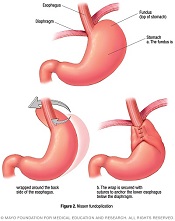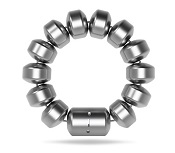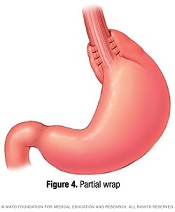Hiatal Hernia or Paraesophageal Hernias
Hiatal hernia or paraesophageal hernias are common and are often the cause of reflux symptoms (GERD). A hernia occurs when one part of your body pushes into an area in which it does not belong. A hiatal hernia, is when your stomach pushes into your chest through an opening in your diaphragm called the hiatus.
There are four types of hiatal hernias:
- Type I or sliding hiatal hernia – your stomach and a portion of your esophagus slide up and down into your chest
- Type II or paraesophageal hernia – less common but more serious type of hernia. The upper part of your stomach slides up by your esophagus into your chest and remains there.
- Type III – the most common type of hiatal hernia. When any portion of your stomach and sometime the entire stomach slides up into your chest and remains there.
- Type IV – a hernia involving your stomach and other organs such as small bowel, colon, etc.
Symptoms of Hiatal Hernias
Symptoms may include:
- Indigestion and heartburn
- Regurgitation
- Chest pain
- Difficulty swallowing
- Nausea and vomiting
- Shortness of breath
- Early satiety

Learn More
For more information or to schedule an appointment with the St. Elizabeth Thoracic Surgery office, please call
(859) 301-2465.
Causes of Hiatal Hernias
Hiatal hernias may develop by conditions that cause increased pressure on your abdomen. This may include:
- Persistent cough
- Severe constipation
- Obesity
- Pregnancy
- Trauma to the area
Diagnosing Hiatal Hernias
Tests that may be used when diagnosing hiatal hernias include:
- Chest X-ray
- Barium swallow
- CT scan
- Upper endoscopy (EGD)
Treating Hiatal Hernias
Hiatal and paraesophageal hernias are repaired with surgery.
Laparoscopic surgery repair of hiatal hernia
During laparoscopic surgery, several small incisions are made in your abdomen. These are used to insert surgical instruments and a laparoscope – a small thin tube with a video camera attached that allows your surgeon to see inside your body during surgery.
To fix the hernia, the stomach is moved into its proper position in the abdomen and the opening in the diaphragm allowing it to move out of place is closed.
Once the stomach is in the correct position an anti-reflux procedure must be performed.
Anti-Reflux Surgical Procedure Options:
Laparoscopic surgery with Nissen fundoplication

Fundoplication is a way to restore the function of your lower esophagus by wrapping it with the upper part of your stomach. The process creates a new valve between your esophagus and your stomach and prevents the contents from your stomach from backing up into your esophagus.
Partial Fundoplication
Some patients may not have an adequate esophageal squeeze for a Nissen Fundoplication so a partial fundoplication may be considered for these situations. In a partial fundoplication, the upper part of the stomach is only partially wrapped around the lower esophagus.
Magnetic Sphincter Augmentation – LINX Procedure

LINX is a newer alternative and minimally invasive surgical procedure for people with GERD. It uses a small, flexible band of titanium magnetic beads to help the sphincter muscle in your esophagus stay closed when it should. When you swallow, the beads separate to allow your food and/or liquid to move into your stomach. However, after the meal the stomach cannot generate enough force to separate the beads to allow reflux. As compared to fundoplication, LINX works like more of a two-way valve allowing you to burp and blech normally preventing side effects such as gas/bloating symptoms which can be experienced with Nissen fundoplication. However, LINX does not alter your stomach and normal anatomy is preserved.
Dr. Valerie Williams at St. Elizabeth Healthcare is the only surgeon in this area to offer LINX.
Hernia repair via Thoracotomy (rarely needed)
Thoracotomy is surgery that involves spreading the ribs on your side to enter your chest. It is more invasive than laparoscopic surgery and requires longer hospital stay and recovery time.
Thoracotomy may be required to fix your hernia if you have had multiple abdominal surgeries.
Schedule an Appointment Today
Call Us to Schedule a Visit
For more information or to schedule an appointment with the St. Elizabeth Thoracic Surgery office, please call
(859) 301-2465.


